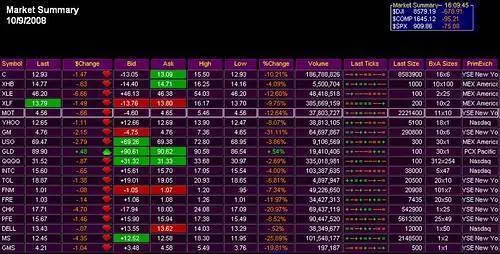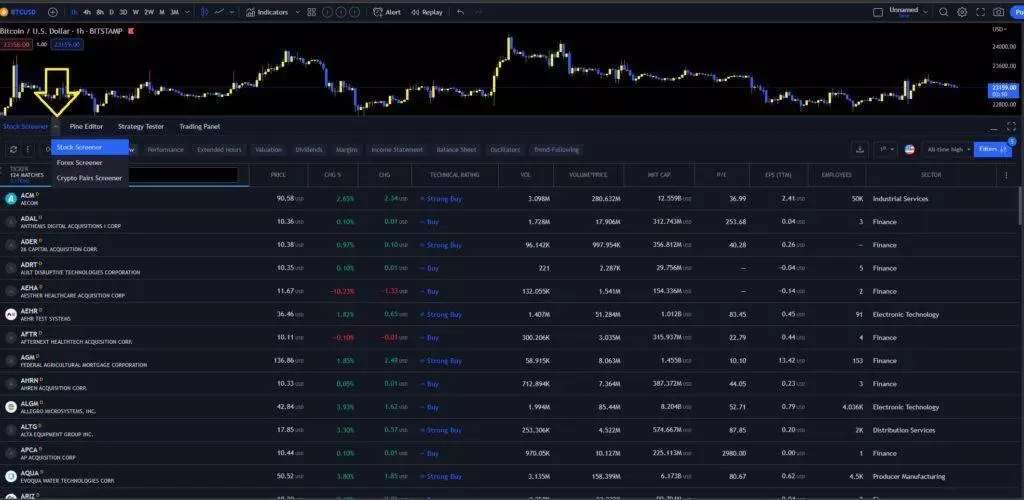
If you have a keen interest in personal development and are enthusiastic about deepening your knowledge of investment finance, the domain of stocks can offer an engaging experience. However, for novice investors, distinguishing between overvalued and undervalued stocks can present challenges. As such, we have compiled this all-inclusive guide in an effort to aid you in cultivating the expertise to identify undervalued stocks, thereby empowering you to make judicious investment decisions.
In this guide, we’ll show you how to identify whether a stock is worth your time and money by looking at key indicators like PE ratio, market capitalization and price-earnings growth ratios. We’ll also discuss the importance of conducting thorough research into a company before investing, as well as offer advice on where you should look for reliable information.
So if you’re ready to get started on your journey towards becoming an informed investor, let’s dive right in! With our guidance, you’ll soon have the confidence that comes with knowing when a stock is undervalued and making smart decisions about your investments.
Identifying Undervalued Stocks Using Fundamental Analysis Techniques

As an investor, it is essential to understand the fundamentals of a stock before investing in it. Knowing whether a stock is undervalued or not can be determined by analyzing several key financial metrics. In this article, we’ll focus on how to identify undervalued stocks using fundamental analysis techniques.
The first step is to compare the current stock price and earnings per share (EPS) with its historical values. If the company’s current EPS is higher than its average EPS over the last few years, then it could show that the stock is undervalued. You should also compare the book value of a company with its current market price; if the book value is greater than the stock price, then this could show that it may be undervalued.
It’s important to note that these are only two indicators of a potential undervalued stock; there are many other factors to consider when gauging stock value, such as cash flow yields and price-to-earnings (P/E) ratios. In our next section, we’ll look at how these financial ratios can help investors make informed decisions about their investments.
Gauging Stock Value With Financial Ratios Such As Cash Flow Yields & P/E Ratios
Are you wondering how to tell if a stock is undervalued? The key to investing in the right stocks lies in understanding the financial ratios that provide insight into the stock’s value. In this guide, we’ll look at the two most popular metrics used to gauge stock value: the cash flow yield and price-to-earnings (P/E) ratio.
The cash flow yield is a measure of free cash flow divided by market capitalization. It’s an important figure for investors since it shows we can turn how much of their investment into liquid cash. The P/E ratio is a measure of a company’s current share price relative to its earnings per share (EPS). This ratio provides insight into whether a stock is being overvalued or undervalued based on its current price compared to its earnings. Investors can use the peg ratio, which measures future growth potential by comparing the P/E ratio with the expected EPS growth rate.
Analyzing these ratios helps investors determine whether a stock is undervalued–and from there they can decide whether they should invest in it. Armed with this knowledge, let’s explore other investment avenues, such as stock screeners and earnings models.

Exploring Investment Avenues With Stock Screeners And Earnings Models
Investing in the stock market can be a daunting task. There are so many factors to consider, and it’s difficult to know where to start. Fortunately, there are several resources available to help investors make informed decisions for stock valuation. Exploring investment avenues with stock screeners and earnings models allows investors to identify potential opportunities in the market.
When determining whether a stock is undervalued or not, financial ratios such as cash flow yields and price-to-earnings (P/E) ratios can provide insight into the true value of the stock. Here are 5 ways you can use these tools to get an accurate picture of stock value:
1. Use Stock Screeners – Stock screeners are valuable tools that allow you to filter stocks according to various criteria such as P/E ratio, dividend yield, sector, and more. This helps investors narrow down potential investments according to their individual criteria.
2. Analyze Earnings Models – By analyzing past earnings reports, investors can gain insight into a company’s financial health and make an informed decision on whether the stock is undervalued.
3. Assess Cash Flow Yields – Calculating cash flows is another way to evaluate whether a stock is currently underpriced or not. A higher cash flow yield typically shows that a company’s shares are undervalued compared to its peers in the industry.
4. Consider Price-to-Earnings Ratios – The P/E ratio compares a company’s current share price relative to its per-share earnings. A lower P/E ratio usually shows that I undervalue the stock compared with its peers in the same sector or industry.
5. Look at Market Sentiment – It’s important for investors to consider market sentiment when evaluating stocks; this includes investor sentiment and analyst reports and other sources of news about the company’s performance and prospects for growth.
Using these resources allows investors to get an accurate picture of whether a stock is truly undervalued or not before investing their money in it – making it easier than ever before for savvy traders and beginner investors alike!
Using Dividend Yields To Determine Whether A Stock Is Under Or Overvalued
It seems ironic that stock investing, which makes money, can sometimes lead to losses. But with the right knowledge, it’s possible to identify undervalued stocks and stay away from overvalued ones. One of the most reliable techniques to do this is by using dividend yields.
Dividend yield is a ratio between the amount of annual dividends paid per share of stock and its current market price. To calculate this ratio, investors use the formula divided per share divided by stock price per share. If the resulting number is higher than average for similar stocks in that industry, then it could be a sign that the stock may be undervalued. If the dividend yield is lower than what’s normal for that sector or company, then it’s likely that the stock might be overpriced and thus overvalued.
By considering dividend yields when investing in stocks, investors can gain an insight into whether a particular stock may be worth buying. With this information at hand, they can make better decisions when deciding which stocks to invest in and potentially generate greater returns from their investments.
Is Knowing How Long It Takes to Buy a Stock Important in Determining If it’s Undervalued?
Knowing how long it takes to buy a stock is crucial in determining if it’s undervalued or not. By understanding the time frame required, investors can determine if they have the patience and resources to hold onto the stock until it reaches its true value. Thus, knowledge of the essential tools for buying stocks is indispensable in making informed investment decisions.
How Do Ratios and Metrics Apply to Trading Commodities?
When it comes to trading commodities and stocks complexities, ratios and metrics play a crucial role. These tools help traders evaluate the performance, risk, and profitability of their investment decisions. By analyzing ratios such as the price-to-earnings ratio or various financial metrics, investors can make informed choices and mitigate potential risks in the ever-changing commodities market.
Making Money By Spotting Bargains – Trade Both Over And Undervalue Stocks

Investing in stocks can be an effective way to make money, but it’s not always easy. You need to know how to spot bargains in the market and trade both overvalued and undervalued stocks. This can be tricky – especially for finding undervalued stocks.
Take, for example, a friend of mine who recently found success trading stocks. He could identify a stock that was trading below its intrinsic value. The market price was lower than the company’s actual worth, so he bought up many shares at a great price! By understanding the difference between intrinsic value and market price, he could make money by spotting an undervalued stock.
So how do you find these types of investments? One approach is by using dividend yields–which measure how much income you can expect from your investments relative to their current market prices. With this information in hand, you’ll be able to determine whether a stock is over or undervalued and make smart buying decisions accordingly.
By taking the time to understand the dynamics of the market and learning how to determine if a stock is undervalued or not, you can increase your chances of making money with your investments. With practice and patience, you’ll gain mastery over finding bargains in the stock market and reap big rewards as your portfolio grows!
Frequently Asked Questions
What Factors Should I Consider When Selecting An Online Broker?
For investing, selecting an online broker is a crucial decision. With so many options out there, it’s hard to know which one is the right fit for you and your portfolio. Coincidentally, there are some key factors that you should consider when making this decision.
First, look at the fees associated with each broker. Are they charging commission on trades? Is the fee structure transparent? Some brokers have hidden fees that can significantly reduce your returns. Second, consider the services offered by each broker.–do they offer research tools or stock analysis? Do they provide access to global markets or just domestic ones? Third, read reviews from other investors who have used their services–what was their experience like? Finally, think about the customer service available from each broker. How quickly do they respond to queries? What support systems are in place if something goes wrong?
By taking these factors into consideration when selecting an online broker, you’ll ensure that your investment decisions are well informed and profitable in the long run.
What Are The Risks Associated With Investing In Undervalued Stocks?
Investing in undervalued stocks can be a great way to make money, but there are also risks involved with this type of investing. So, what are the risks associated with investing in undervalued stocks?
There are several factors you should consider before taking the plunge into investing in undervalued stocks. First, it is important to understand the current market conditions and specific features that make a stock undervalued. This includes looking at factors such as the company’s financial performance, management decisions, and competitive position.
It is also essential to understand the potential risks associated with investing in any stock, especially those that are deemed undervalued. These include:
Short-term:
- Market volatility and liquidity risk
- Difficulty in accurately predicting stock prices
- Long-term:
- Company performance could decline
- Risk of economic downturns or industry changes
It’s important to be aware of these risks when investing and to ensure you have done your research on any stocks you choose to invest in. Understanding how these risks can affect your investments will help you make informed decisions and minimize losses. Diversifying your portfolio is always a good idea, as it minimizes risk and helps protect against potential losses.
For investing in any type of stock, having knowledge about the company behind it is key for success. Make sure you understand who is running the business and their track record for making sound decisions that lead to long-term growth.
Knowing what level of risk you’re comfortable taking on is also important so that you don’t overextend yourself financially or emotionally by taking on too much risk without proper compensation or reward down the line. By conducting thorough research on any companies whose stocks you plan to buy into, you can gain insight into their value proposition and increase your chances of achieving success with your investments.
What Is The Best Way To Monitor The Performance Of My Investments?
When you invest in the stock market, it’s essential to keep a close eye on how your investments are performing. After all, you want to ensure that you’re getting the most out of your money! But how can you do this?
The best way to monitor the performance of your investments is by tracking key metrics. This metrics include factors such as price movements, trading volume, and earnings reports. By keeping tabs on these indicators, you’ll be able to spot any potential opportunities or risks in the market. It’s always a good idea to stay informed about industry news and trends so you can make well-informed investment decisions.
By utilizing these strategies and regularly monitoring your investments, you’ll be able to gain insight into performing your portfolio and make educated decisions about when to buy or sell stocks. With discipline and diligence, this process can help ensure that your investments are working for you – no matter what market conditions may arise!
What Are The Tax Implications Of Investing In Undervalued Stocks?
Investing in undervalued stocks can be a great way to boost your portfolio and make some serious money, but it’s important to understand the tax implications. Navigating taxes can be tricky for investing, so let’s look at what you need to know.
For taxes, here are three key points you should keep in mind:
1) Depending on the country you live in, there may be different tax rates for capital gains from investments and dividends paid out by companies.
2) You may also have to pay taxes on any profits made from selling investments, such as stocks or bonds.
3) Depending on the type of investment product, there could also be special rules that apply to taxes.
It’s important for investors to do their research and understand all the potential tax implications before investing in undervalued stocks. This includes consulting with an accountant or financial advisor who can help explain any potential liabilities or deductions associated with your investments. Knowing the details is essential for ensuring that you are making informed decisions about your finances and taking advantage of all available tax breaks.
How Can I Diversify My Portfolio To Reduce Risk?
Diversifying your portfolio is a great way to reduce the risk associated with investing in undervalued stocks. To protect your investments, diversification is key. But how do you know which stocks to invest in and how much of each to have?
Well, there are a few things you can do to diversify your portfolio and manage the risks associated with investing in undervalued stocks:
• Look for companies with different business models, such as those involved in technology, biotech, retail, or finance.
• Invest in various sectors and industries to spread out the risk across different markets.
• Research each stock thoroughly before making an investment decision.
By doing this, you can minimize the potential losses that could occur if one of your investments performs poorly. You should also know any tax implications when investing in undervalued stocks – some states may impose taxes on capital gains or dividends generated by these investments. Understanding these tax rules will help you make smarter and more informed decisions when investing in undervalued stocks.
To reduce risk and protecting your investments, diversifying your portfolio is essential. It’s important to research each stock thoroughly before deciding, while also being mindful of any potential tax implications for state-to-state. By taking these steps into consideration and having a well-rounded portfolio of investments, you can reduce the overall risk when investing in undervalued stocks and maximize your returns over time!
Conclusion
In conclusion, investing in undervalued stocks can be a great way to capitalize on the stock market and increase your returns. However, it is important to understand the risks associated with investing in stocks that are not currently trading at their full value. By researching an online broker, diversifying your portfolio, and monitoring the performance of your investments, you can mitigate risk and maximize potential gains.
For example, a recent case study involving an investor who focused on undervalued stocks yielded a 20% return in a single year. By researching the company’s financials and using financial analysis tools such as discounted cash flow models and price-to-earnings ratios, this individual could identify stocks which were significantly undervalued yet had strong potential for growth.
Overall, investing in undervalued stocks can be a great way to realize higher returns than those offered by traditional investments. With careful research, monitoring of investments, and diversification of portfolio assets, it is possible to reduce risk while taking advantage of market opportunities.




